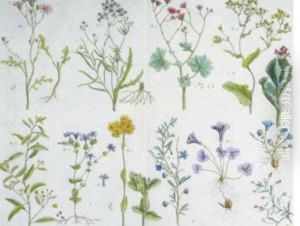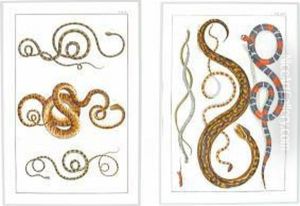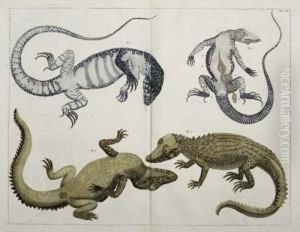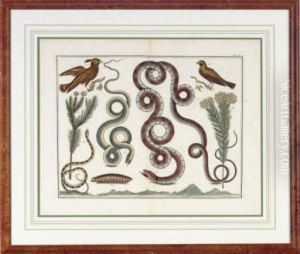Albertus Seba Paintings
Albertus Seba was a Dutch pharmacist, zoologist, and collector known for his work in natural history during the 18th century. Born in Etzel, a small village in East Frisia (now part of Germany), Seba moved to Amsterdam as an apprentice and eventually established himself as a pharmacist. His pharmacy became a popular spot for sailors to bring exotic natural specimens from their travels, and Seba began to amass an extensive collection of animals, plants, and other curiosities.
Seba's vast collection included insects, birds, mammals, reptiles, as well as herbarium of plants, shells, and corals, all of which were exotic to Europeans at the time. His cabinet of curiosities, 'Cabinet of Natural Curiosities', became famous and was one of the most significant collections in Europe, visited by the high society and scholars. This collection was partly a result of Seba's network with the Dutch East India Company, which allowed him to obtain specimens from Africa, Asia, and the Americas.
In 1731, Seba published the first volume of his 'Locupletissimi rerum naturalium thesauri accurata descriprio' (Accurate Description of the Very Rich Thesaurus of the Principal and Rarest Natural Objects), which was a detailed catalogue of his collection with illustrations. The work was remarkable for its detailed engravings and was an important contribution to the field of natural history. He published his work in four volumes, but the last two were released posthumously. Seba's collection was eventually sold to Peter the Great and became the cornerstone of the Kunstkamera, Russia's first public museum. Seba's work provided valuable insights for future generations and played a significant role in the development of taxonomy.

![[reptile Studies]: Six Plates](https://www.niceartgallery.com/imgs/980804/s/albertus-seba-reptile-studies-six-plates-278ef16c.jpg)


![[shells]: Six Plates](https://www.niceartgallery.com/imgs/980801/s/albertus-seba-shells-six-plates-19047cd6.jpg)

![[locupletissimi Rerum Naturalium Thesauri]: Four Plates](https://www.niceartgallery.com/imgs/980799/s/albertus-seba-locupletissimi-rerum-naturalium-thesauri-four-plates-a40c0389.jpg)